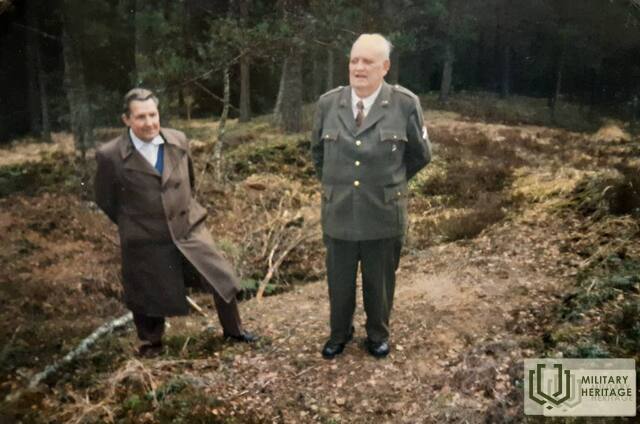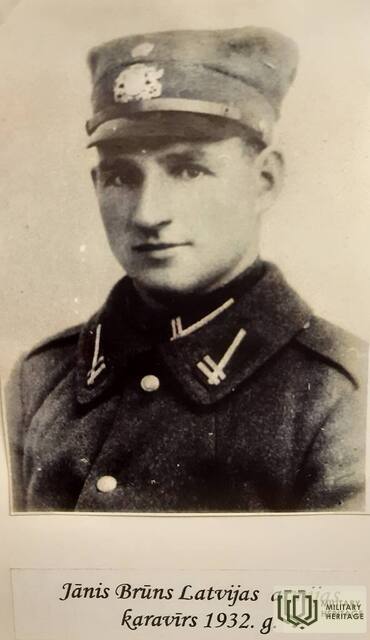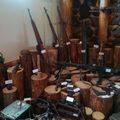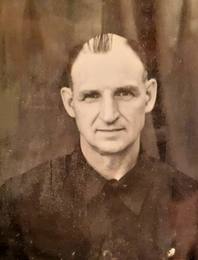Воспоминания Яниса Тилибса о партизанском отряде "Тевияс Ванаги"

Воспоминания Яниса Тилибса о деятельности партизанского отряда "Тевияс Ванаги" в Южном Курземе до 1950 года
Осенью 1941 года мой брат Альфред Тилибс вступил в Лиепайский 21-й полицейский батальон. В 1942 году он ушел на фронт. На фронте он воевал в Волхове, где в начале 1943 года был ранен и отправлен на лечение в Ригу. Его брат был одним из первых латышских легионеров, получивших Железный крест второй степени, о чем писали в прессе того времени. В газете также была опубликована его фотография с наградой на груди.
В 1946 году брат был освобожден из фильтрационного лагеря в Москве. Он вернулся в отчий дом в "Айзкапи" в Бартинской волости. По возвращении он начал создавать нелегальную организацию под названием "Патриотические ястребы". Была создана партизанская группа, состоящая из националистов из Барты, Ницы и Лиепаи. Вскоре местные коммунисты начали приносить Дзельцкрусту газеты с его фотографией. Они беспокоились, что таким людям позволят гулять на свободе. Мой брат услышал об этом и ушел в лес. Его группа "Патриотические ястребы" начала работать. Поскольку ЧК не смогла схватить моего брата, они арестовали меня. Мне тогда было всего 16 лет. По дороге в Лиепаю я сбежал из ЧК и присоединился к брату в партизанах. Мой брат возглавлял группу из 18 человек. Я помню, что там были Янис Брунс из Ницы, Гунарс Рукутис и Янис Пиртниекс из Барты. Остальных я не знал. Мы были вооружены в основном немецким оружием: автоматами, пулеметами, так называемыми "костяными пилами".
Летом 1947 года было проведено несколько операций против чекистов и местных соучастников. Осенью 1947 года ЧК обнаружила наш бункер. В бою пали Гунарс Рукутис, Айварс Розе, тяжело ранен Янис Брунас. Всего из группы пало 6 человек.
С наступлением зимы мы разделились на две группы. Группа под руководством Яниса Брунса осталась в лесу Ница, а мы с братом и еще несколько партизан перешли в леса Айзпуте и Кулдига. Мы спокойно перезимовали и в 1948 году воссоединились. Мы были в Кулдигском районе. Как выяснилось позже, в группу проник предатель, и вскоре на нашу группу напали чекисты. В Турлавской волости, недалеко от дома Платкай, был тяжело ранен мой брат Альфред Тилиб. Раненный в ноги и голову, видя, что бой проигран, он выпустил последнюю пулю в себя.
Я остался один. Я вернулся к Янису Брунсу в Ниццу. 17 ноября 1948 года Бруно велел мне отправиться в приход Гавьез на разведку, чтобы организовать операцию на 18 ноября. Выйдя поздно вечером из леса возле одного из домов, мы попали в засаду ЧК. Завязался бой, в котором я и Бруно были тяжело ранены. Бруно был расстрелян, а меня, хотя и тяжело раненного, оттащили в лагерь, примерно за 10 км.
В 1949 году началась депортация, и почти всех наших сторонников забрали. Однако в то время в латвийской глубинке было много латышских патриотов, больше, чем коммунистов. Я жил в лесу до марта 1950 года. Из большой группы нас осталось только двое: нис Пиртниекс и я. Бункер был обнаружен, и на нас напали чекисты. В бункер бросили гранату. Я был тяжело ранен. Нас обоих арестовали.
Осенью 1950 года нас, около 10 человек, судил военный трибунал. Нас приговорили к 25 годам. Меня отправили в Караганду, где я прожил до 1956 года.
Связанная хронология
Связанные объекты
Площадка "Бункер Дансе", мемориальная доска "Патриотические ястребы"
Бункер Duncs с мемориальной доской "Патриотические ястребы" находится в волости Отаньку, на месте, где располагался первый бункер партизанского отряда организации национального сопротивления "Патриотические ястребы".
Зимой 1945/46 года в деревне Кибури Бартской волости три патриотически настроенных человека под руководством Альфреда Тилиба (бывшего легионера 19-й дивизии СС) основали движение национального сопротивления "Тевийские ястребы", которое вскоре насчитывало около 200 членов из разных мест: Лиепая, Айзпуте, Ница, Дуника, Гробиня, Барта, Гавиезе. Это движение боролось за освобождение Латвии.
Бункер, в котором находились партизаны, имел размеры 4 x 4 м и был сделан из толстых, горизонтально уложенных бревен. Вход в него осуществлялся сверху через люк, из которого росла небольшая сосна, под которой находилась лестница. Люки находились на двух этажах, на каждом из которых было место для сна 7-8 человек. К сожалению, бункер был обнаружен и взорван в 1947 году.
Сегодня на месте бункера можно увидеть углубление в земле. Место находится в лесу и может быть свободно посещено любым человеком в любое время без предварительного бронирования.
Неподалеку имеется место для пикника с навесом.
Мемориальная доска была открыта 9 сентября 2005 года. Гранитная стела была установлена Латвийским национальным объединением партизан в сотрудничестве с Ницким самоуправлением, Бартским лесничеством и Рудской основной школой.
Объект имеет статус культурно-исторического памятника региона
Музей национального движения сопротивления в Ренде
Музей расположен в нескольких километрах от центра Ренды. Выставка рассказывает о движении сопротивления в Латвии, которое длилось 50 лет: сопротивление первой советской оккупации, сопротивление оккупации нацистской Германии, вооруженное и ненасильственное сопротивление советской оккупации. Экспозиция расположена в двух зданиях. В первом здании можно осмотреть свидетельства первой советской оккупации и немецкой оккупации. В отреставрированном здании амбара экспозиция посвящена национальной партизанской войне. Между двумя зданиями находится бункер с аутентичной планировкой и траншеями, по которым перемещались солдаты. Рядом с музеем в Ренде находятся траншеи, блиндажи и полоса препятствий как тренировочная площадка для Яунсардзе и других желающих. Посещение необходимо бронировать заранее.
Рядом с этим местом в январе 1946 года произошло одно из крупнейших сражений национальных партизан, получившее название битва при Апузниеки, в котором группа национальных партизан Кабиле одержала победу над существенно превосходящими её оккупационными войсками. На месте боя оборудована зона отдыха и установлены информационные стенды.
Магазин древностей Отанки
Магазин антиквариата «Отанки» находится во дворе бывшей школы Руде. Рассказ экскурсовода о бункере и его создателях, их дальнейшей судьбе. Можно посмотреть макет бункера, созданный воспитанниками бывшей школы Руде (по собственному рассказу партизан), и пространственную карту лесного массива тех времен с отмеченными домами сторонников и контактов. Собраны бытовые экспонаты бункера. Предварительная заявка по телефону 26323014 или по электронной почте lelde.jagmina@gmail.com.









